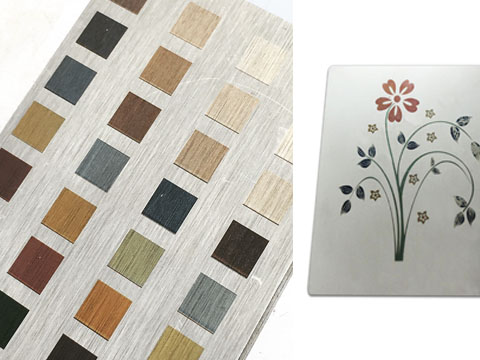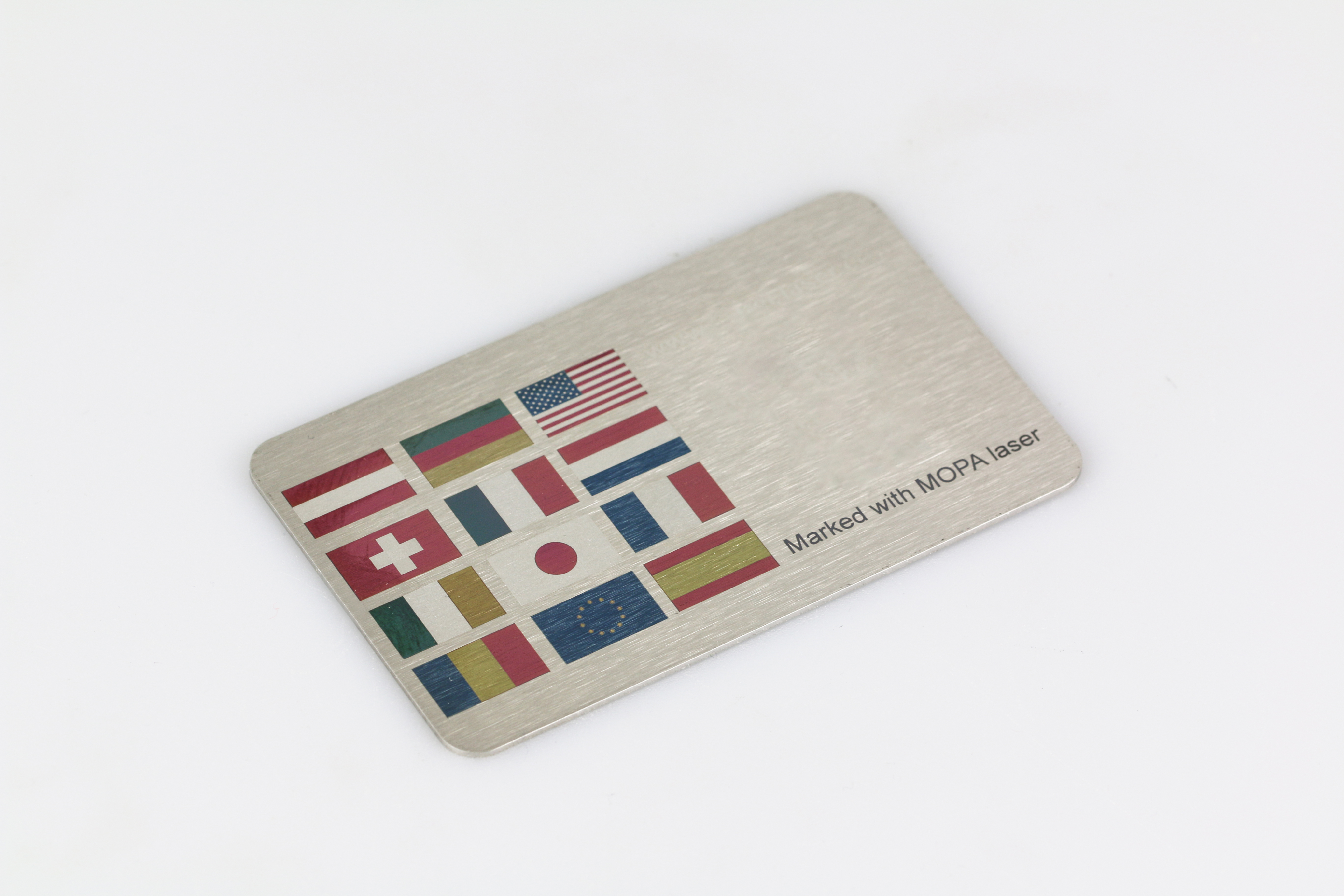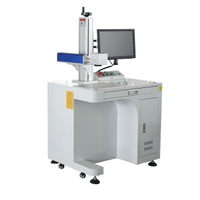
Master Oscillator Power Amplifier, commonly called MOPA, is one of the most recent innovations in fiber laser technology.
Its ability to perform color markings on stainless steel materials and the ability to engrave on plastic without burning has attracted a lot of attention.
With the entry of MOPA laser technology in engraving applications, it has become the second most used pulsed fiber laser technology, the first one being Q-switch.
This article will explain MOPA fiber laser technology in-depth such as its working, applications, advantages, and disadvantages.
MOPA Fiber Laser Technology-Explained
What is MOPA and How Does it Work?

MOPA is short for Master Oscillator Power Amplifier.
The name refers to its two gas discharge chambers, the master oscillator, and the optical amplifier.
First, the laser beam is generated at the master laser/oscillator. Then the generated laser beam is amplified or magnified by the optical power amplifier.
The amplified laser output is then sent to a galvo (mirror galvanometer) head in the MOPA laser marking machines to manipulate the laser beam's path for high-speed engraving applications.
With the help of a galvo head, laser machines can engrave at a very high speed.
As a result, Galvo heads are typically used in portable laser engravers.
In MOPA fiber lasers, the master laser source is a fiber laser, and the optical amplification is done using magnification lenses.
These lenses can make the laser beam to oscillate and amplify the laser power up to four times.
MOPA fiber laser has a variable pulse duration, which is made possible by the two gas discharge chambers.
It can be controlled to adjust the laser beam's pulse duration anywhere between 2ns - 200ns.
Applications of MOPA Laser Technology

The primary application of a MOPA laser is color-engraving metals, especially stainless steel and black marking anodized aluminum. On stainless steel, it can engrave 16 or more colors.
It engraves each color separately as the laser beam produces a chemical reaction over the stainless steel material generating a superficial permanent marking.
MOPA laser marking can be used on plastic material surfaces for applications that require limited melt burns. Also, the engravings made on dark plastic with a MOPA laser are easily visible.
It can be an alternative to the expensive UV lasers used for plastic engraving.
However, it cannot be considered a cheaper alternative, MOPA is costlier than most other fiber laser engravers, which can perform descent engraving operations on plastic.
You only need to get a MOPA laser engraver if your application requires color-engraving metals and black marking anodized aluminum.
A standard fiber laser is more than enough for most other engraving applications.
MOPA Laser Engraving - Material Capability
For engraving on most soft materials, cheap and reliable laser engravers are more than enough, but for engraving effectively on metals, you need to use a fiber laser.
Fiber laser marking is ideal for almost all metals and can engrave them with a black or grey mark, whereas a MOPA fiber laser can produce colorful engraving marks on various materials.
A MOPA fiber laser can engrave on aluminum (black-engrave), brass, acrylic, nickel, carbon steel, stainless steel (color-engrave), chrome, carbide, tungsten, iron, silicon, gold, titanium, silver, other precious metals, plastic, and more.
It can deep engrave on metals with a smooth cut edge, and on plastic, it does not leave behind yellow burns.
MOPA laser also makes it easier to work on sensitive materials like gold, nickel, plastic, and Printed Circuit Boards (PCBs) that are generally a little hard to engrave using other laser machines.
The Good and Bad of MOPA Fiber Laser Technology
The major advantage of using a MOPA laser is its ability to mark colors by surface oxidation and its adjustable pulse duration.
Since the frequencies, pulse durations, and energy are adjustable in a MOPA laser, you will have much more control over the engravings.
Short duration is especially beneficial when marking on plastic materials as it provides high contrast making with low or no burns and low foaming.
The low heat development in metal parts while engraving with MOPA lasers limits corrosion and gives clean marks.
MOPA fiber laser technology also has all the advantages of a standard fiber laser.
It has high precision, low energy utilization, powerful beam quality, high-speed marking, long lifetime, is air-cooled, high optical quality, and is maintenance-free.
The major disadvantage of MOPA fiber laser technology is its high price. They are costlier than most other fiber laser engravers in the market.
MOPA also lags in the speed of engraving. The color engraving part is slower than the average speed of common fiber laser engravers.
This will be a problem if you plan to process thousands of metal pieces with color engraved logos in a single day.
Differences between MOPA and Q-switched technology
MOPA v/s Q-switched Technology
Though Q-switched and MOPA technology uses fiber lasers, their operation has fundamental differences.
Q-switching technology is sometimes referred to as "giant pulse formation" or "Q-spoiling".
Q-switched technology is used on most standard fiber lasers to produce a pulsed laser beam. It allows the laser to achieve more extreme peak powers than continuous-wave lasers.
In a Q-switched laser, such peak power is achieved by using a variable attenuator inside the laser's optical resonator.
In a Q-switched fiber laser, the pulse duration is fixed, and It can be anywhere between 80ns - 120ns.
MOPA technology uses two gas discharge chambers (i.e., the master oscillator and the optical amplifier) to control the pulse duration, and it is adjustable anywhere between 2ns - 200ns.
Also, Q-switching has a frequency range between 20kHz - 80kHz whereas MOPA can have a frequency range of 1.6 kHz - 1000 kHz.
Both these laser technology can process the same materials, but MOPA has a little advantage in processing aluminum, plastics, and stainless steel materials.
Why is MOPA technology so expensive?
MOPA fiber laser technology is quite new to the market, and continuous research is happening to improve its efficiency and material capabilities.
To produce a laser that can operate at low and high frequencies and offer an adjustable pulse frequency mechanism it requires many sensitive internal components (optical and electrical).
All these increase the cost of developing MOPA technology. When it reaches the customer, additional fees like taxes, shipping charges, customs clearance, service fees, etc., further increase the machine's price.
Is the difference only in the color engraving?
One of the major advantages of using a MOPA laser system is its ability to color engrave on stainless steel, but this alone is not the difference between a Q-switching and MOPA.
Q-switch technology is most known as fiber laser engraving technology. It is the default configuration used in standard fiber laser engravers.
Though both these techniques look similar, it works differently inside the machine.
Q-switching only allows the power supplies to generate path light between 1 - 500kHz, but in MOPA technology, it can generate 1 - 2700kHz or more.
This large amplitude enables MOPA lasers to have different engraving results over plastic and metal materials.
Final Thoughts
MOPA fiber laser technology is a great advancement in laser engraving.
MOPA lasers are ideal for applications requiring engraving on stainless steel, black marking aluminum, and when you need a burn-free engraving on plastic.
You can use other standard Q-switched fiber laser engravers for most other applications.









































